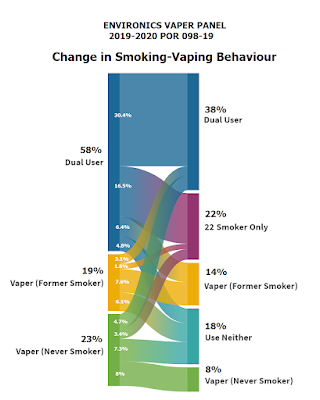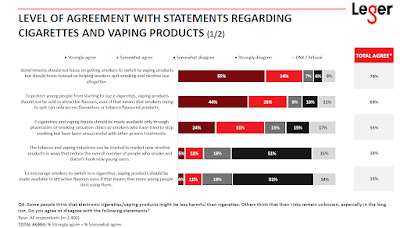Last week Canada's new Ministers of Health and Mental Health, the Hon. Jean-Yves Duclos and the Hon. Carolyn Bennett, issued a joint statement on tobacco.
In this statement the Ministers introduced a two new elements to the federal plan: the intention to follow a "people-centred approach" and an adjustment to priority populations to include "those suffering with mood or anxiety disorders, as well as people living in poverty."
This post looks at the higher -prevalence populations identified by Health Canada in recent years and how reducing smoking in these groups will contribute to achieving lower overall smoking.
New priority populations
Health Canada's focus on higher-smoking populations continues to evolve. When Canada's Tobacco Strategy was announced in May 2018) the communities of concern identified were Indigenous peoples, LGBTQ+ persons, young adult males and workers in certain industries. Later departmental communications dropped workers from the group and listed only "LGBTQ+, young adults and Indigenous Peoples". Last week the Ministers statement made no reference to young adults, when adding mental health and poverty to the list of priority concerns.

The data discussed below is presented on a downloadable data sheet.
A wide target
Most Canadian smokers (81%) would be included in one of the groups identified by Health Canada since 2018.
- 2021 Target:
Those in any of the following circumstances: Indigenous populations, LGBTQ populations, those suffering with mood or anxiety disorders, as well as people living in poverty
41% of the population, 53% of smokers are affected by one or more of these conditions. - 2018 Target (1):
Those in any of the following circumstances: Indigenous peoples, LGBTQ+ persons, young adult males and workers in certain industries
33% of the population, 47% of smokers are affected by one or more of these conditions. - 2018 Target (2):
Those in any of the following circumstances: Indigenous peoples, LGBTQ+ persons, young adult males
13% of the population, 22% of smokers are affected by one or more of these conditions - All of the groups identified as priorities since 2018:
Those in any of the following circumstances: Indigenous peoples, LGBTQ+ persons, young adult males, workers in certain industries, people living in poverty, those suffering with mood or anxiety disorders.
66% of the population, 81% of smokers are affected by one or more of these conditions.
The prevalence gaps and the benefits of closing them
All of the sub-populations identified as targets by Health Canada since 2018 have considerably higher rates of tobacco use than do their counterparts -- Indigenous Canadians are twice as likely to be smokers as non-Indigenous Canadians, and those with mental health issues are similarly at double the risk.
The difference between the smoking rates can be characterized as the "prevalence gap". The prevalence gap between those living in the poorest 30% and upper 70% of household incomes is 6 percentage points (20% vs 14%), that between Indigenous Canadians living off reserve and non-Indigenous Canadians is 17 percentage points (32% vs 15%) and the gap between those who are affected by any of the six conditions identified by Health Canada and those who are not is 12 percentage points (21% vs 9%).
 |
| Figure from: Mind the Gap: Disparities in Cigarette Smoking in Canada |
















